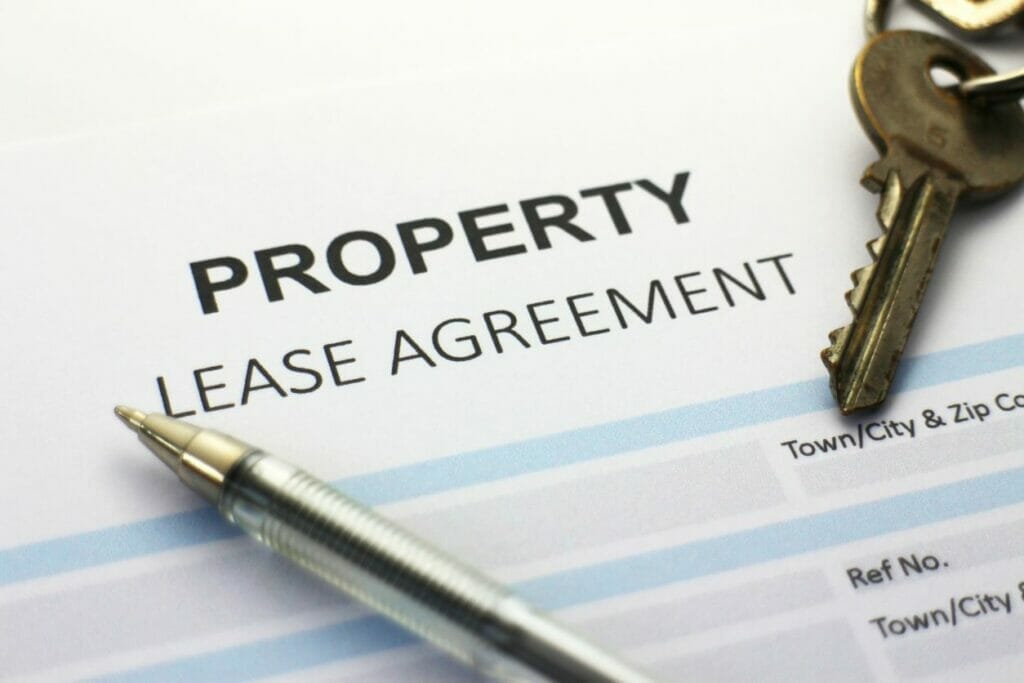
Tenant improvement allowance: A Complete Guide
Are you looking to lease a commercial space for your business? One important factor to consider is the landlord’s tenant improvement allowance (TIA). A TIA is money the landlord provides to the tenant to make improvements or alterations to the leasing space.
However, understanding the nuances of TIA can be confusing for those new to commercial real estate. In this comprehensive guide, we’ll explore everything you need to know about TIA, including what it is, how it works, and tips for negotiating a good allowance.
By the end, you’ll be equipped with the knowledge to make informed decisions about your commercial lease agreement. Let’s dive in!

Table of Contents
What is a tenant improvement allowance?
A tenant improvement allowance, commonly called TIA, is a monetary allowance a landlord provides to their tenant to renovate or upgrade the leased commercial space. It can cover various expenses, such as construction costs, electrical and plumbing upgrades, installation of new fixtures, and more. TIA is often negotiated as part of the lease agreement.
This allowance can help tenants customize the space to meet their specific business needs and enhance the property’s value for the landlord. The amount of TIA offered will depend on various factors, including the lease’s length, the property’s quality, and the tenant’s creditworthiness.
Overall, TIA is a valuable tool for businesses looking to improve their commercial space without incurring substantial out-of-pocket expenses.
Who owns tenant improvements?
The ownership of tenant improvements depends on the terms of the lease agreement. In most cases, tenant improvements are owned by the landlord and become part of the property once completed. This means the tenant cannot remove or take the improvements with them when moving out.
However, some lease agreements may allow tenants to own certain improvements, such as trade fixtures or equipment not permanently attached to the property. It is important to carefully review lease agreements to understand who owns the tenant improvements and ensure that all parties agree before signing the lease.
Additionally, tenants should consider negotiating lease agreements that allow them to remove certain types of improvements upon the termination of the lease or that provide them with compensation for improvements that they are required to leave behind. This can protect tenants’ investments in tenant improvements and ensure they receive fair value for their contributions to the property.

What qualifies for the tenant improvement allowance?
The items that qualify for a tenant improvement allowance will vary based on the lease agreement and the tenant’s needs. Generally speaking, TIA can be used for a wide range of improvements to the leased commercial space, including structural changes, electrical and plumbing upgrades, installation of new fixtures or equipment, painting, flooring, and more.
However, landlords may restrict how TIA funds can be used and may require tenants to provide detailed plans and cost estimates before approving any improvements. In some cases, landlords may also require that any improvements made with TIA funds be returned to their original condition when the lease ends.
Overall, tenants need to work closely with their landlords to ensure that all improvements are approved and meet the requirements outlined in their lease agreement.
What doesn’t qualify for the tenant improvement allowance?
While tenant improvement allowance funds can cover a wide range of commercial space improvements, certain items typically do not qualify for TIA funding. For example, tenants may be unable to use TIA funds to purchase furniture or other non-permanent fixtures, as these items are considered personal property and not part of the building.
Additionally, any improvements that are not directly related to the commercial space, such as parking lot upgrades or signage, may not be covered by TIA. Landlords may also restrict the type or quality of materials used for improvements or require approved contractors to perform certain work.
It’s important for tenants to carefully review their lease agreement and discuss any questions or concerns with their landlord before proceeding with any improvements using TIA funds.

Why doesn’t tenant improvement cover everything?
Although a tenant improvement allowance can be substantial, it typically does not cover all expenses related to a commercial space renovation. This is because landlords want to ensure they invest in improvements that will increase the property’s value and benefit future tenants. As a result, landlords may restrict how TIA funds can be used and require tenants to cover any costs that exceed the allowance.
Additionally, some upgrades or renovations may not be feasible due to building code or zoning restrictions, which can limit the scope of improvements that can be made.
Ultimately, it’s important for tenants to carefully review their lease agreement and fully understand the terms and limitations of their TIA to avoid any unexpected costs or conflicts with the landlord.
How much is the typical tenant improvement allowance?
The amount of tenant improvement allowance offered by landlords can vary widely depending on various factors, including the lease’s length, the tenant’s creditworthiness, and the commercial space’s condition.
The amount of TIA offered is typically based on a dollar-per-square-foot formula, with the average allowance ranging from $10 to $50 per square foot.
However, it’s important to note that some landlords may offer a flat dollar amount rather than a dollar-per-square-foot calculation. It’s also worth noting that landlords may place restrictions on how TIA funds can be used or require tenants to cover any expenses that exceed the allowance.
As with any aspect of a commercial lease agreement, tenants need to negotiate and fully understand the terms of their TIA before signing on the dotted line.
Differences in tenant improvements between property types
Commercial tenant improvements vary significantly between property types with unique requirements and considerations. Here are some of the differences that tenants should be aware of:
Office Spaces:
Tenant improvements in office spaces typically focus on creating a professional, functional, and comfortable environment for employees and clients. This may include upgrades to the flooring, lighting, and interior walls and installing HVAC systems and other infrastructure to support office operations. Offices may also require the installation of wiring and cabling for telecommunications and networking, as well as the creation of dedicated conference rooms and break areas.
Retail Spaces:
Retail tenant improvements often center around creating an attractive storefront and optimizing the space for product displays. Improvements may include the installation of flooring, lighting, shelving, and signage, as well as creation of custom displays or fixtures. Retail spaces may also require the installation of HVAC systems and other infrastructure to support customer traffic and sales.
Industrial Spaces:
Tenant improvements in industrial spaces tend to be more specialized, focusing on creating dedicated storage or manufacturing areas. Improvements may include the installation of specialized equipment or machinery, as well as the creation of dedicated loading docks, storage racks, and conveyor systems. Industrial spaces may also require the installation of specialized lighting and HVAC systems to support the production process.
Medical Spaces:
Medical tenant improvements may require specialized features like soundproofing, specialized lighting, and equipment, such as exam tables or imaging machines. Improvements may include creating patient rooms, exam rooms, and waiting areas.
Restaurant Spaces:
Restaurant tenant improvements often include installing specialized kitchen equipment, custom cabinetry, and fixtures, as well as creating dedicated dining areas and service counters. Improvements may also include the installation of specialized lighting and HVAC systems to support food preparation and customer comfort.
Overall, each property type has unique requirements for tenant improvements, and tenants should work closely with their landlords and contractors to ensure that all improvements meet their specific needs and expectations. It’s important to carefully review lease agreements to understand any restrictions or requirements related to tenant improvements and budget accordingly for any costs that may exceed the tenant improvement allowance.

What is a turn-key agreement?
A turn-key agreement is a lease agreement that places responsibility for tenant improvements squarely on the landlord. In a turn-key agreement, the landlord handles all tenant improvements, from design and planning to construction and installation. This means that when a tenant moves into a turn-key space, it is already fully customized and ready for use.
Turn-key agreements can benefit tenants requiring a specific type of space but needing more time or expertise to handle tenant improvements. They are also useful for landlords who want to attract high-quality tenants with specialized needs or requirements. Turn-key agreements typically come with higher lease rates, as the landlord assumes greater responsibility and risk.
However, turn-key agreements can be an attractive option for tenants requiring a customized space but needing more expertise or resources to handle tenant improvements.
Does the tenant improvement allowance count as a loan?
No, the tenant improvement allowance is not considered a loan. It is a negotiated amount of money that a landlord agrees to contribute towards tenant improvements as part of a lease agreement. The tenant improvement allowance is typically offered as a one-time payment or a series of payments made to the tenant over the lease.
Unlike a loan, the tenant improvement allowance does not accrue interest and does not need to be repaid. The tenant improvement allowance aims to incentivize tenants to lease a property and to offset the costs of improvements necessary to customize the space to meet their specific needs. The exact amount of the tenant improvement allowance is negotiated between the landlord and the tenant. It is typically based on the property type, the lease length, and the tenant’s creditworthiness.
It is important to carefully review lease agreements to understand the terms and conditions of the tenant improvement allowance and to ensure that all parties agree before signing the lease.

What is an amortized tenant improvement allowance?
An amortized tenant improvement allowance is a lease agreement where the landlord provides a lump sum payment to the tenant to cover tenant improvements. However, instead of receiving the entire allowance upfront, the landlord divides the allowance over the lease term, and the tenant repays the allowance through higher monthly rent payments.
This allows the landlord to recoup the cost of the tenant improvements over the lease, and it helps the tenant spread out the cost of improvements over time. The advantage of an amortized tenant improvement allowance is that it provides tenants with more flexibility in managing their cash flow, as they can allocate resources toward other areas of their business.
Additionally, it allows landlords to offer larger tenant improvement allowances without incurring undue risk. However, tenants should be aware that the cost of the tenant improvements will be factored into their monthly rent payments. Before signing the lease, they should carefully review lease agreements to ensure that they understand the terms and conditions of the amortized tenant improvement allowance.
Are tenant improvements tax deductible?
Yes, tenant improvements can be tax deductible for business owners. The Internal Revenue Service (IRS) allows business owners to deduct the costs of tenant improvements as a business expense.
The IRS considers tenant improvements to be capital expenses, which are assets expected to provide value to the business over a long period. However, the deduction must be taken over years through a process called depreciation. Depreciation allows business owners to deduct a portion of tenant improvements yearly until the cost has been fully depreciated. The exact amount that can be deducted and the depreciation schedule depends on the improvement type and the lease length.
It is important to consult with a tax professional to ensure that you follow all IRS regulations and take advantage of all available tax deductions related to tenant improvements.
How do you account for tenant improvement allowances?
When a landlord provides a tenant improvement allowance, it is recorded as a liability on the landlord’s balance sheet. As the tenant completes the improvements, the liability is gradually reduced, and the cost of the improvements is recorded as an asset on the landlord’s balance sheet. Accounting for tenant improvement allowances requires careful record-keeping and adherence to generally accepted accounting principles (GAAP).
On the other hand, the tenant will record the improvements as fixed assets on their balance sheet and depreciate the cost of the improvements over their useful life. The amount of the tenant improvement allowance that the tenant is responsible for repaying will also be recorded as a liability on the tenant’s balance sheet. It is important to keep detailed records of all costs associated with tenant improvements, including invoices, receipts, and other documentation.
Additionally, landlords and tenants should consult with their accountants or financial advisors to ensure they are accounting for tenant improvement allowances correctly and in accordance with GAAP. This will help to ensure accurate financial reporting and compliance with accounting regulations.
How do you track tenant improvement allowances?
Tracking tenant improvement allowances involves careful record-keeping and communication between the landlord and tenant. The process typically involves the following steps:
Establish a budget: The landlord and tenant should agree on a budget for the tenant improvements and document this in the lease agreement.
Track expenses: The landlord and tenant should track all expenses related to the tenant’s improvements, including invoices, receipts, and other documentation.
Request reimbursement: The tenant should request reimbursement for eligible expenses from the landlord. The request should include all necessary documentation to support the request.
Review and approve: The landlord should review the request and approve eligible expenses for reimbursement. The landlord may require additional documentation or clarification before approving the request.
Record transactions: The landlord and tenant should record all transactions related to the tenant improvement allowance in their accounting records. This will help to ensure accurate financial reporting and compliance with accounting regulations.
Monitor progress: The landlord and tenant should monitor the progress of the tenant improvements to ensure that they are completed on time and within budget.
By following these steps and maintaining detailed records, landlords and tenants can effectively track tenant improvement allowances and ensure they are used per the lease agreement.
Conclusion
In conclusion, tenant improvement allowances are essential to commercial real estate leasing. They provide tenants with the financial resources needed to improve leased space while also benefiting landlords by increasing the value of their property.
The amount of the tenant improvement allowance varies depending on several factors, and the types of improvements that qualify are typically outlined in the lease agreement. It is essential for landlords and tenants to carefully track expenses related to tenant improvements and follow accounting regulations to ensure accurate financial reporting. By doing so, both parties can ensure that the tenant improvement allowance is used effectively per the lease agreement.
Contact Point Acquisitions today to learn more about tenant improvement allowances and how they can help you maximize the value of your properties. We look forward to hearing from you soon! Thank you for your time.
About The Author

Jesse Shemesh
Disclaimer
Please note that Point Acquisitions is not a tax expert or tax advisor. The information on our blogs and pages is for general informational purposes only and should not be relied upon as legal, tax, or accounting advice. Any information provided does not constitute professional advice or create an attorney-client or any other professional relationship. We recommend that you consult with your tax advisor or seek professional advice before making any decisions based on the information provided on our blogs and pages. Point Acquisitions is not responsible for any actions taken based on the information provided on our blogs and pages.
1031 Exchange Capital Gains Tax Deferral
According to a 2021 report by the National Real Estate Exchange Services (RES), over 240,000 1031 exchange transactions were completed in the United States, totaling $100 billion. This impressive figure underscores the role of 1031 exchanges in the real estate…
Read More1031 Exchange Benefits
As of Q4 2023, the national vacancy rate for all commercial property types in the United States sat at 9.2%, according to CBRE’s latest insights and research. This represents a slight decrease compared to the previous quarter and suggests a…
Read MoreUnderstanding Commercial Property Value
The art of commercial real estate valuation is a critical skill in an industry teeming with over $1 trillion in yearly transactions. Our detailed guide on how to value commercial property is designed to elevate your expertise and give you…
Read More

